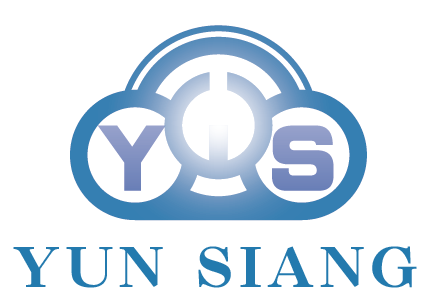在企業策略與領導力傳承的浩瀚領域中,資深顧問的退場不僅僅是個人職業生涯的終點,更是一場精心策劃的接力賽。如何優雅轉身,將積累的知識、經驗和客戶關係有效地傳遞給下一代,成為擺在每一位資深顧問面前的重要課題。一代的「退場」哲學,核心在於優雅、負責、持續 。
優雅退場,意味著專業的傳承與交接。這不僅是技術的轉移,更包含了企業文化與價值觀的傳承。提前規劃並與客戶、公司和團隊充分溝通,建立信任感,為各方提供足夠的調整時間 。
負責的態度,強調客戶權益優先,確保他們的利益不會因顧問的退場而受損。完成所有未竟的專案和承諾,並將長年累積的經驗和知識轉化為可複製、可傳承的系統或文件 。
持續的顧問角色定位,則鼓勵資深顧問在退場後轉型為導師或顧問,繼續貢獻其專業知識和經驗。建立傳承機制,積極參與公司或團隊的傳承計畫,協助培養新一代的專業人才,甚至參與行業標準制定,延續其專業影響力 。
本文旨在為即將退休或轉型的企業領導者、資深顧問,以及渴望學習傳承策略的年輕專業人士,提供一份實用的指南。我們將深入探討如何制定個性化的退場時間表、如何進行知識萃取與系統化、如何維護與交接客戶關係,以及如何培養新一代領導者。透過成功和失敗的案例分析,以及相關工具和資源的推薦,助您在企業策略與領導力傳承的道路上,走得更穩、更遠。
專家提示:制定退場計畫時,務必將個人目標與企業需求相結合,確保傳承過程平穩順利。同時,積極尋找新的職業發展機會,將豐富的經驗轉化為新的價值,例如擔任顧問或參與行業協會等。記得,退場不是結束,而是新的開始。
立即下載我們的退場策略規劃工具包,開啟您的優雅轉身之旅!
掌握優雅退場的哲學,讓資深顧問的經驗與價值持續發光發熱。
- 制定個人化的退場時間表,並提前與企業、客戶及團隊溝通,建立信任感,確保傳承過程平穩 .
- 將個人經驗系統化,轉化為可複製的知識庫或培訓教材,降低知識斷層風險,確保經驗傳承不間斷 .
- 積極參與傳承計畫,轉型為導師或顧問,持續貢獻專業知識,延續個人在產業中的影響力 .
Table of Contents
Toggle退場的藝術:定義顧問職業生涯晚期的價值延續與圓滿傳承
In abstract algebraic contexts, “value extension” and “perfect inheritance” refer to specific concepts within field theory and object-oriented programming, respectively.
Value Extension:
In abstract algebra, a “value extension” typically relates to valuations on fields. A valuation on a field $K$ is a function that assigns a value (often a real number) to each non-zero element of $K$, satisfying certain properties related to multiplication and addition.
- Definition: A valuation extension occurs when you have a field $K$ with a valuation $v$, and you consider a larger field $L$ that contains $K$. A valuation on $L$ is an “extension” of $v$ if it behaves consistently with $v$ on the elements of $K$.
- Properties: For a finite extension $L/K$ of fields, if $K$ is complete with respect to its valuation $v$, there’s often a unique way to extend $v$ to $L$. This extension can be related to the absolute value on $L$ and its topology.
- Contexts: This concept appears in areas like algebraic number theory and algebraic geometry when studying the properties of fields and their extensions.
Perfect Inheritance:
In computer science, particularly in object-oriented programming (OOP), “inheritance” is a fundamental concept. “Perfect inheritance” isn’t a standard technical term with a universally agreed-upon definition in the same way “value extension” is in algebra. However, it can be interpreted in a few ways:
-
Flawless Implementation of Inheritance: It could refer to a scenario where inheritance is implemented perfectly in code, meaning:
- Code Reusability: Subclasses seamlessly inherit and utilize the attributes and methods of their parent classes without issues.
- No Conflicts: There are no naming conflicts or ambiguities that arise from multiple inheritance.
- Correct Overriding/Extension: When subclasses override or extend parent class behavior, it’s done in a logically sound and predictable manner.
- Clear Hierarchies: The class hierarchy is well-designed, making the relationships between classes intuitive and easy to understand.
-
Metaphorical “Perfect Inheritance” of Skills or Values: In a more philosophical or life-coaching context, “perfect inheritance” might refer to passing on valuable traits, skills, or work ethics to the next generation. For example, the idea of inheriting a strong work ethic, as described in one article, where parents teach their children the value of doing difficult tasks well. This isn’t a technical computing term but rather a metaphorical use of “inheritance.”
-
Mathematical “Perfect Field” Inheritance: In abstract algebra, a “perfect field” is a field where every irreducible polynomial is separable. A key theorem states that any algebraic extension of a perfect field is also a perfect field. This could be loosely termed “perfect inheritance” in the sense that the property of being “perfect” is inherited by extensions.
Without further context, it’s difficult to pinpoint the exact meaning of “perfect inheritance.” However, in the realm of programming, it likely emphasizes the ideal implementation and benefits of the inheritance mechanism in OOP.
系統化傳承五部曲:從知識萃取到客戶關係的無縫轉接
如何實現知識提取的無縫轉移
實現知識提取的無縫轉移,關鍵在於建立一個系統化、結構化的流程,確保知識能夠被有效地識別、記錄、傳承和應用。這不僅僅是簡單的資訊交接,更是一種組織能力的延續和提升。以下將從多個面向詳細說明如何達成此目標:
1. 制定清晰的知識轉移計劃
- 確定轉移範圍: 明確需要轉移的知識範疇,包括但不限於流程、業務邏輯、測試策略、常見問題、已知缺陷等。
- 審核現有知識庫: 評估現有文件的完整性、準確性和可用性,找出缺失的部分,並考慮是否能從過去的知識轉移經驗中重用或更新材料。
- 設定明確期望: 確定知識轉移的時間表、交付成果以及相關人員的職責,並選擇適合知識類型的轉移方式。
- 識別關鍵利益相關者: 包括知識的提供者(傳授者)和接收者(學習者)。
2. 建立系統化的知識提取流程
知識提取是將隱性知識(存在於個人腦中)轉化為顯性知識(可記錄、共享)的過程。常見的挑戰在於,專家可能難以清晰地描述他們的工作流程。為瞭解決這個問題,可以採用以下方法:
- 觀察法(Shadow Mode): 觀察專家如何工作,並適時提問以獲取細節。
- 出聲思考法(Think Aloud Mode): 專家錄製操作過程並進行解說,然後將這些錄影整理成文件和流程。
- 結構化訪談: 根據預設的問題框架,有條理地詢問專家,引導他們描述工作步驟和決策邏輯。
- 範本和工具的使用: 創建標準化的範本,如知識轉移清單、流程圖等,以確保所有關鍵領域都被涵蓋。
- 利用技術: 運用知識管理平台(如 Bloomfire)來集中存儲和管理知識,同時也可以藉助大型語言模型(LLMs)來自動化從大量非結構化文件中提取關鍵資訊的過程。
3. 採用多樣化的知識傳遞方式
- 導師制與影子計畫(Mentorship and Shadowing Programs): 讓經驗豐富的員工指導新員工或接任者,尤其適用於轉移難以書面化的隱性知識。
- 同儕學習與交流(Peer-to-Peer Meetings / Communities of Practice): 鼓勵團隊成員之間相互學習、分享經驗,並建立專業社群,促進知識的即時獲取和問答。
- 工作坊與培訓(Workshops and Training): 針對特定的知識或技能,組織專門的培訓課程。
- 文件與知識庫(Documentation and Knowledge Repositories): 建立結構化、易於搜索的知識庫,包含操作手冊、最佳實踐、常見問題解答(FAQ)等。
- 情境化學習(Learning in Context): 將知識的學習和轉移融入日常工作流程中,避免額外負擔。
4. 克服知識轉移中的常見挑戰
- 組織文化: 建立鼓勵知識分享、協作和持續學習的文化,克服員工習慣於保守知識的行為。
- 技術整合: 選擇並整合合適的知識管理工具,確保系統之間的兼容性、易用性及成本效益。
- 變革管理: 讓員工理解知識轉移的重要性,並積極參與到變革過程中,提供必要的培訓以減輕阻力。
- 「部落知識」(Tribal Knowledge): 解決那些僅存在於個人腦中、缺乏文件記錄的關鍵資訊,這通常需要有意識地去記錄和分享。
- 時程壓力: 知識轉移通常在員工離職或專案轉移前進行,時間緊迫,因此需要提前規劃。
- 文件過時: 確保知識庫和文件能被定期更新,以提供最新的資訊。
5. 驗證與持續改進
- 回饋機制: 鼓勵知識接收者提供關於知識轉移過程的反饋,瞭解哪些方法有效,哪些需要改進。
- 效果評估: 衡量知識轉移的效果,例如新員工的上手時間、工作效率的提升等,並將這些成果數據化,以證明知識轉移的價值。
- 持續優化: 根據反饋和評估結果,不斷調整和優化知識轉移的策略和流程。
轉型顧問新篇章:導師、顧問與產業貢獻者的多元價值實現
Consultants should embrace diverse roles beyond traditional ones for several key reasons that benefit both the consultants themselves and their clients. This expansion into varied roles can lead to increased innovation, better problem-solving, enhanced client relationships, and a stronger competitive advantage.
Here’s a detailed breakdown of why consultants should embrace diverse roles:
1. Enhanced Innovation and Problem-Solving:
Diverse Perspectives: A wider range of roles allows consultants to engage with different facets of a business and interact with a broader spectrum of people. This exposure to diverse backgrounds, experiences, and thinking styles naturally fosters more innovative solutions and creative approaches to complex problems. When teams consist of individuals with varied perspectives, they are better equipped to identify blind spots and devise comprehensive strategies.
Out-of-the-Box Thinking: Stepping outside traditional boundaries encourages consultants to challenge assumptions and explore unconventional methods. This can lead to breakthroughs that might not be discovered within a more rigid, specialized framework.
2. Broader Skill Development and Adaptability:
Cross-Functional Expertise: Embracing diverse roles allows consultants to develop a wider array of skills, moving beyond a single area of expertise. This could include project management, client relationship building, strategic planning, and even areas like HR or IT consultation.
Adaptability in a Changing Market: The business landscape is constantly evolving. Consultants who are comfortable and skilled in various roles are more adaptable and resilient, able to pivot their services to meet new client needs or industry shifts.
3. Stronger Client Relationships and Market Reach:
Deeper Client Understanding: By taking on diverse roles, consultants can gain a more holistic understanding of a client’s business operations, challenges, and goals. This deeper insight allows for more tailored and effective solutions.
Meeting Varied Client Needs: Clients often have diverse and fluctuating needs. Consultants who can offer flexibility in their roles and services can better align with these varied requirements, from strategic advisory to hands-on implementation.
Expanded Market Access: Firms that champion diversity in their workforce, and by extension in the roles they offer, are better positioned to understand and serve diverse client bases and tap into new markets.
4. Personal and Professional Growth for Consultants:
Career Advancement: Taking on new and challenging roles can accelerate a consultant’s career growth, equipping them with a richer resume and a more robust professional network.
Increased Job Satisfaction: Variety in work can lead to greater engagement and job satisfaction, preventing burnout and fostering a more fulfilling career.
Attracting Top Talent: Companies that offer diverse roles and embrace inclusivity are more attractive to a wider pool of talent, including those with non-traditional backgrounds.
5. Competitive Advantage for Consulting Firms:
Differentiation: In a crowded market, firms that offer a broader range of services and demonstrate adaptability through diverse roles can stand out from competitors.
Enhanced Reputation: A commitment to diversity in roles and talent can enhance a firm’s reputation, making it a preferred choice for clients and a desirable employer for prospective consultants.
Improved Business Performance: Studies consistently show that diverse teams and inclusive cultures lead to better financial performance, increased innovation, and higher revenue.
Examples of Embracing Diverse Roles:
- Deloitte and Accenture: These firms are examples of large consulting organizations that actively work to increase diversity within their workforce and offer a wide range of services, demonstrating a commitment to varied perspectives.
- Boston Consulting Group (BCG) and McKinsey & Company: These firms are recognized for their focus on Diversity, Equity, and Inclusion (DEI) and actively seek candidates from diverse backgrounds, understanding that varied experiences strengthen their problem-solving capabilities.
- Independent Consultants: These individuals often offer specialized expertise and flexibility, adapting their roles to precisely fit client needs, showcasing a different model of diverse role engagement.
By moving beyond traditional, narrow definitions of consulting roles, consultants can unlock greater potential for innovation, client success, and their own professional development.
| 原因 | 說明 |
|---|---|
| 增強創新和問題解決能力 | 更多元化的角色使顧問能夠接觸到業務的不同方面,並與更廣泛的人群互動。接觸不同的背景、經驗和思維方式,能自然地培養出更具創意的解決方案和方法來應對複雜的問題 。團隊成員如果擁有不同的觀點,就能夠更好地發現盲點並制定全面的策略 。跳出傳統的界限,鼓勵顧問挑戰假設並探索非常規方法。這可能會帶來在更嚴格、專業的框架內無法發現的突破 . |
| 更廣泛的技能發展和適應性 | 擁抱多元化的角色,顧問可以發展更廣泛的技能,而不僅僅是單一的專業領域。這可能包括專案管理、客戶關係建立、策略規劃,甚至包括人力資源或 IT 諮詢等領域。商業環境在不斷發展。在各種角色中感到舒適和熟練的顧問更具適應性和彈性,能夠調整其服務以滿足新的客戶需求或行業變化 . |
| 更牢固的客戶關係和市場範圍 | 通過扮演不同的角色,顧問可以更全面地瞭解客戶的業務運營、挑戰和目標。這種更深入的洞察力可以提供更量身定製和有效的解決方案。客戶通常有不同且不斷變化的需求。能夠在其角色和服務中提供靈活性的顧問可以更好地滿足這些不同的需求,從策略諮詢到實際執行。在員工隊伍中倡導多元化的公司,以及通過他們提供的角色來擴展,能夠更好地理解和服務於不同的客戶群,並開拓新市場 . |
| 顧問的個人和專業成長 | 承擔新的和具有挑戰性的角色可以加速顧問的職業發展,使他們擁有更豐富的履歷和更強大的專業網路。工作中的多樣性可以帶來更大的參與度和工作滿意度,防止倦怠並培養更有成就感的職業生涯。提供多樣化角色並擁抱包容性的公司對更廣泛的人才庫(包括那些具有非傳統背景的人)更具吸引力 . |
| 諮詢公司的競爭優勢 | 在擁擠的市場中,提供更廣泛的服務並通過多樣化的角色展示適應性的公司可以從競爭對手中脫穎而出。對角色和人才多樣性的承諾可以提高公司的聲譽,使其成為客戶的首選和有抱負的顧問的理想僱主。研究始終表明,多元化的團隊和包容性的文化可以帶來更好的財務業績、更高的創新能力和更高的收入 . |

一代的「退場」哲學:優雅、負責、持續的顧問角色定位. Photos provided by unsplash
避開傳承陷阱:確保影響力延續與組織永續經營的最佳實踐
Succession planning is a critical process for any organization to ensure continuity and stability during leadership transitions. However, several common pitfalls can derail even the best-laid plans. Avoiding these common mistakes can significantly increase the likelihood of a smooth and successful succession.
Here are key best practices to avoid succession pitfalls:
1. Start Planning Early and Make it Continuous:
Avoid the “One-and-Done” Approach: Succession planning is not a one-time event but an ongoing process. Regularly review and update your plans, ideally every six months or at least annually, to keep them relevant to evolving business needs and strategies.
Proactive Planning: Begin the process long before a leadership change is imminent. This allows ample time for identifying, developing, and grooming potential successors.
2. Identify and Develop Multiple Successors:
Avoid Relying on a Single Successor: Unexpected events can make a sole candidate unavailable. Identify a pool of well-qualified candidates for key roles to create a “succession bench.”
Develop a Tailored Development Plan: Recognize that each successor has unique strengths and weaknesses. Create individualized development programs that address their specific capability gaps, including exposure to all business functions, mentorship, leadership training, and gradual increases in responsibility.
Consider External Experience: Encourage potential successors to gain experience outside the family business to provide valuable perspectives and reduce insularity.
3. Define Critical Roles and Competencies Objectively:
Avoid “One-Size-Fits-All”: Do not use a generic competency framework. Define the specific skills, knowledge, and leadership qualities crucial for success in each critical role within your organization.
Evaluate Based on Potential and Fit: Select successors based on a rigorous and objective assessment of their capabilities, not solely on past performance in their current role or personal relationships. Consider their adaptability, resilience, and readiness to lead through ambiguity.
Separate Ownership from Leadership: Recognize that leadership ability and ownership equity are distinct. Assign leadership roles based on merit and readiness.
4. Ensure Transparency and Stakeholder Buy-In:
Communicate the Plan: Clearly communicate the succession planning process, criteria for selection, and the role of individuals to all stakeholders, including potential successors. Transparency demystifies the process, manages expectations, and fosters a positive culture.
Secure Buy-In from Senior Leaders: Succession planning is deeply intertwined with long-term business strategy. Ensure buy-in from the CEO, board of directors, and senior leaders across the organization.
5. Plan for Various Transition Scenarios:
Include Planned and Unplanned Transitions: Plan for both predictable events like retirements and unexpected departures due to resignations, illness, or other reasons. Develop and test contingency plans to respond effectively to leadership changes.
Define Roles and Responsibilities: Clearly delineate who will benefit financially from the business and who will manage its day-to-day operations, as these roles may not always be held by the same person or group.
6. Involve Expert Advisors:
Seek External Guidance: Consider forming an advisory panel of internal and external members, including legal and financial experts, to provide objective guidance and ensure decisions are in the best interest of the business’s long-term health.
By implementing these best practices, organizations can mitigate common succession pitfalls, ensuring a stronger leadership pipeline and a more stable future.
一代的「退場」哲學:優雅、負責、持續的顧問角色定位結論
在瞬息萬變的商業環境中,資深顧問的價值不僅體現在他們所提供的專業知識,更在於他們如何以優雅、負責、持續的態度,為企業的永續發展貢獻最後一份力量。正如一代的「退場」哲學所倡導的,退場不應被視為職業生涯的終結,而是一個轉型和傳承的契機 。
透過優雅的規劃與溝通,確保知識和經驗的平穩轉移 。以負責的態度,維護客戶的權益,並將隱性知識系統化 。更重要的是,以持續的顧問角色定位,將豐富的經驗轉化為導師或顧問的價值,繼續為產業做出貢獻 。
期望本文能為您提供有價值的指引,無論您是即將退休的資深顧問,還是肩負重任的企業領導者,都能在企業策略與領導力傳承的道路上,實現個人價值與企業永續發展的雙贏。讓我們共同努力,讓每一位資深顧問都能以最優雅的姿態謝幕,留下最深遠的影響力 。
一代的「退場」哲學:優雅、負責、持續的顧問角色定位 常見問題快速FAQ
什麼是優雅退場?
優雅退場是指資深顧問在專業上進行知識和企業文化價值觀的傳承與交接,透過提前規劃和充分溝通,建立信任感,讓各方有足夠的調整時間 [1, 6].
為什麼負責的態度在退場中很重要?
負責的態度強調以客戶權益為優先,確保客戶的利益不受顧問退場影響,並完成所有未完成的項目和承諾,將經驗知識轉化為可複製的系統 [7, 9].
退場後如何保持持續的顧問角色?
資深顧問可以在退場後轉型為導師或顧問,繼續貢獻專業知識和經驗,參與傳承計劃、協助培養人才,甚至參與行業標準制定,延續其專業影響力 [3, 13].
如何建立系統化的知識轉移流程?
建立系統化的知識轉移流程需要明確轉移範圍、審核現有知識庫、設定期望,並運用觀察法、出聲思考法和結構化訪談等方法來提取隱性知識 [1, 4].
知識轉移中常見的挑戰有哪些?
常見挑戰包括組織文化阻礙知識分享、技術整合問題、變革管理不足、以及難以記錄和分享的「部落知識」;應建立鼓勵知識分享的文化,選擇合適的知識管理工具,並讓員工積極參與變革 [2, 5].
顧問如何實現多元價值?
顧問可通過擔任導師、顧問或參與行業協會等方式,將豐富的經驗轉化為新的職業發展機會,跳出傳統框架,擁抱更多元的角色,實現個人和專業的成長 [14, 15].
企業如何避開傳承陷阱?
企業應儘早開始規劃傳承,識別並培養多位潛在繼承者,客觀地定義關鍵職位和能力,確保過程透明並獲得利益相關者的支持,為各種過渡情境做好準備 [6, 8].
企業領導者應如何應對企業經營的挑戰?
企業領導者可以利用漏斗分析的概念,透過數據成果,找出最適合企業使用的應對策略, 同時也需要掌握經營目標的績效,透過團隊的反饋瞭解工作成效 [10, 12].
如何與客戶建立長久的關係?
與客戶建立長久的關係可以注重溝通、積極應對、將客戶視為個人, 並且通過客戶滿意度調查與反饋機制,以瞭解客戶的意見和需求 [7, 11].



